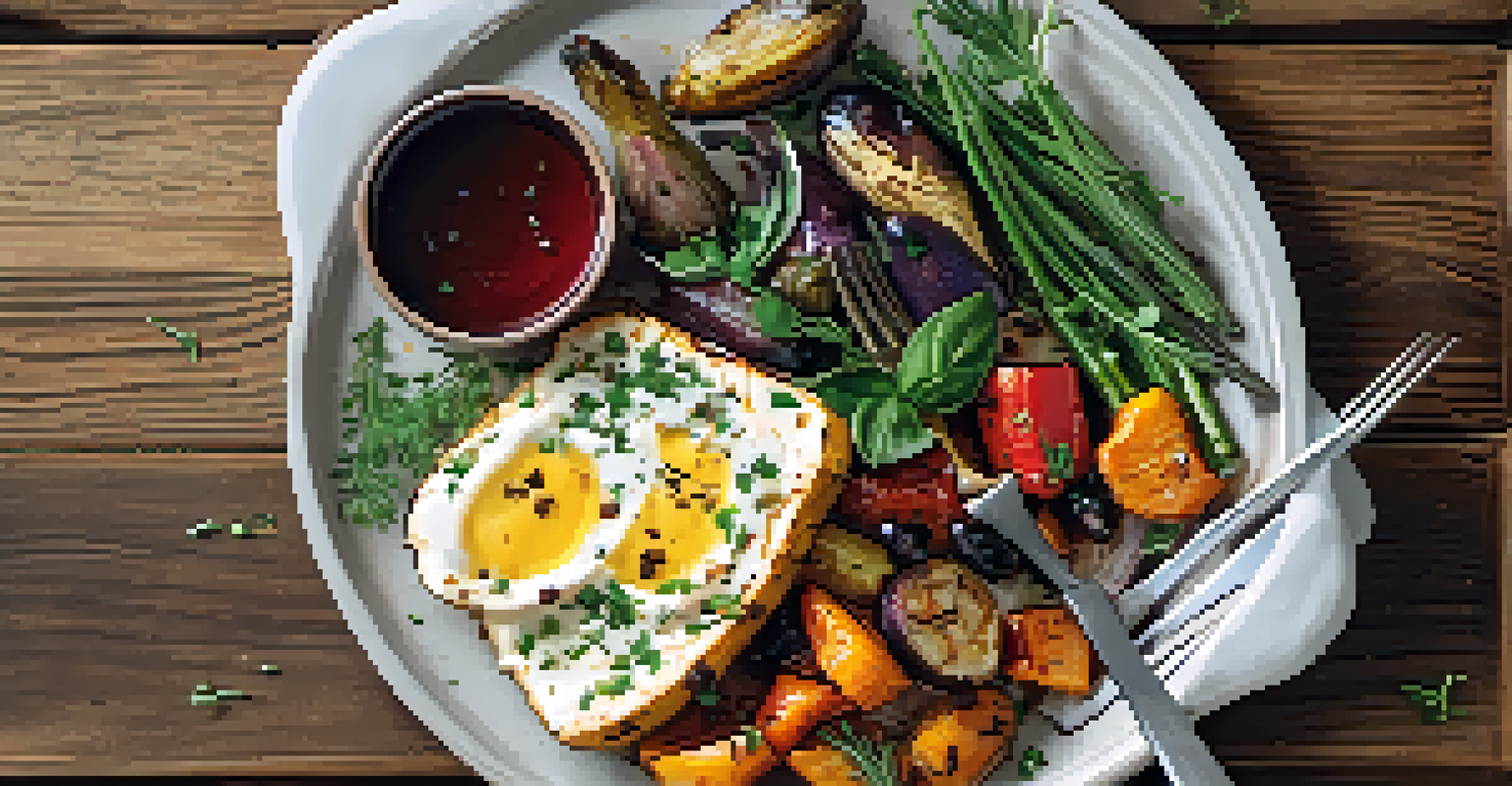The Role of Food in Healing: A Culinary Medicine Approach

Understanding Culinary Medicine: A Holistic Approach
Culinary medicine blends the art of cooking with the science of nutrition. It focuses on how our food choices can influence our health, promoting well-being through delicious meals. Imagine your kitchen as your pharmacy, where every ingredient has the potential to heal or harm.
Let food be thy medicine and medicine be thy food.
This approach encourages individuals to take control of their health through informed food choices, making it a proactive rather than reactive practice. By understanding the nutritional value of ingredients, we can tailor our diets to combat specific ailments. It's like having a personalized health plan that tastes great!
Furthermore, culinary medicine emphasizes the joy of cooking and sharing meals, fostering community and connection. When we gather around the table, we not only nourish our bodies but also our relationships. This holistic view of health incorporates both physical and emotional well-being.
The Science Behind Food and Healing
Scientific research supports the idea that certain foods possess healing properties. For instance, foods rich in antioxidants, like berries and leafy greens, can help combat inflammation and reduce the risk of chronic diseases. It's fascinating to think that something as simple as a bowl of blueberries could be doing wonders for your body!

Moreover, the gut-brain connection highlights how what we eat affects our mental health. Probiotic-rich foods, such as yogurt and sauerkraut, can improve gut health, which in turn can enhance mood and cognitive function. Think of your gut as your second brain, and feed it well!
Culinary Medicine Empowers Health
Culinary medicine combines cooking and nutrition to help individuals make informed food choices that promote well-being.
By incorporating these healing foods into our diets, we can actively participate in our own health journeys. It’s not just about eating for survival; it’s about eating for vitality and longevity. Every meal becomes an opportunity to nourish ourselves from the inside out.
Key Ingredients for Healing Cuisine
Certain ingredients stand out for their healing properties, and incorporating them into our meals can make a significant difference. Turmeric, for example, is known for its anti-inflammatory effects, making it a powerful addition to soups and smoothies. Adding a pinch of this golden spice can turn an ordinary dish into a health-boosting powerhouse.
Eating is an agricultural act.
Garlic is another culinary hero, rich in compounds that support the immune system and heart health. Whether roasted, sautéed, or used raw, garlic can enhance the flavor and health benefits of any meal. It’s like a secret ingredient for a healthier you!
Finally, don’t forget about healthy fats, such as those found in avocados and olive oil. They not only add a creamy texture to dishes but also support brain health and reduce inflammation. So, don’t shy away from these tasty fats; they’re your friends on the healing journey.
The Importance of Whole Foods
Whole foods are at the heart of culinary medicine, as they are minimally processed and packed with nutrients. Fruits, vegetables, whole grains, nuts, and seeds provide essential vitamins and minerals that our bodies need to function optimally. Think of whole foods as nature's medicine cabinet, filled with everything you need for good health.
Incorporating a variety of whole foods into your diet not only supports physical health but also promotes overall well-being. The vibrant colors and textures of fresh produce can brighten your meals and mood alike. Plus, the act of preparing and enjoying whole foods can be a mindful practice that enhances your connection to your meals.
Healing Foods Make a Difference
Incorporating ingredients like turmeric, garlic, and healthy fats into meals can significantly enhance health benefits.
On the other hand, heavily processed foods often lack essential nutrients and can lead to health issues over time. By choosing whole foods, we empower ourselves to make choices that are nourishing and healing. It’s a simple yet powerful shift that can have profound impacts on our health.
Cooking Techniques That Enhance Healing
The way we prepare food can significantly affect its health benefits. Techniques like steaming, roasting, or grilling can retain more nutrients compared to frying or boiling. For example, steaming vegetables helps preserve their vitamins, making them even more beneficial for your health.
Moreover, using fresh herbs and spices not only elevates the flavors of your dishes but also adds additional health benefits. Fresh basil, for instance, is anti-inflammatory and can enhance digestion. It's like adding a sprinkle of wellness on top of your meals!
Experimenting with different cooking methods can also make eating healthy more enjoyable. The crunch of roasted vegetables or the aroma of herbs can transform a mundane meal into a culinary delight. When cooking becomes an adventure, it encourages us to explore and appreciate the healing power of our food.
Mindful Eating: A Key Component of Healing
Mindful eating is an essential aspect of culinary medicine, as it encourages us to be present with our food. This practice involves savoring each bite and tuning into our body’s hunger and fullness cues. By doing so, we can develop a healthier relationship with food and make more conscious choices.
When we take the time to appreciate our meals, we’re more likely to enjoy the flavors and textures, leading to greater satisfaction. This can help prevent overeating and promote better digestion. Think of it as a form of self-care, where you nourish not only your body but also your mind.
Community Supports Healthy Eating
Building a supportive community around food encourages healthier habits and fosters a shared commitment to wellness.
Additionally, mindful eating can help us recognize emotional triggers that lead to unhealthy eating habits. By identifying these patterns, we can make more intentional choices that align with our health goals. It’s a journey of self-discovery that enhances our overall well-being.
Building a Supportive Community Around Food
Creating a supportive community around food can amplify the benefits of culinary medicine. Whether it’s cooking with family, sharing recipes with friends, or joining a local cooking class, these connections can inspire healthier habits. Imagine the joy of preparing a meal together, filled with laughter and shared experiences!
Communities that prioritize healthy eating often foster a culture of learning and support. Sharing knowledge about nutritious ingredients and cooking techniques can empower others to embrace culinary medicine. It’s like planting seeds of wellness that can grow and flourish together.

Additionally, local farmers' markets and community gardens encourage access to fresh, whole foods while supporting local agriculture. These spaces not only provide nutritious options but also create a sense of belonging. By engaging with our communities around food, we cultivate a shared commitment to health and healing.